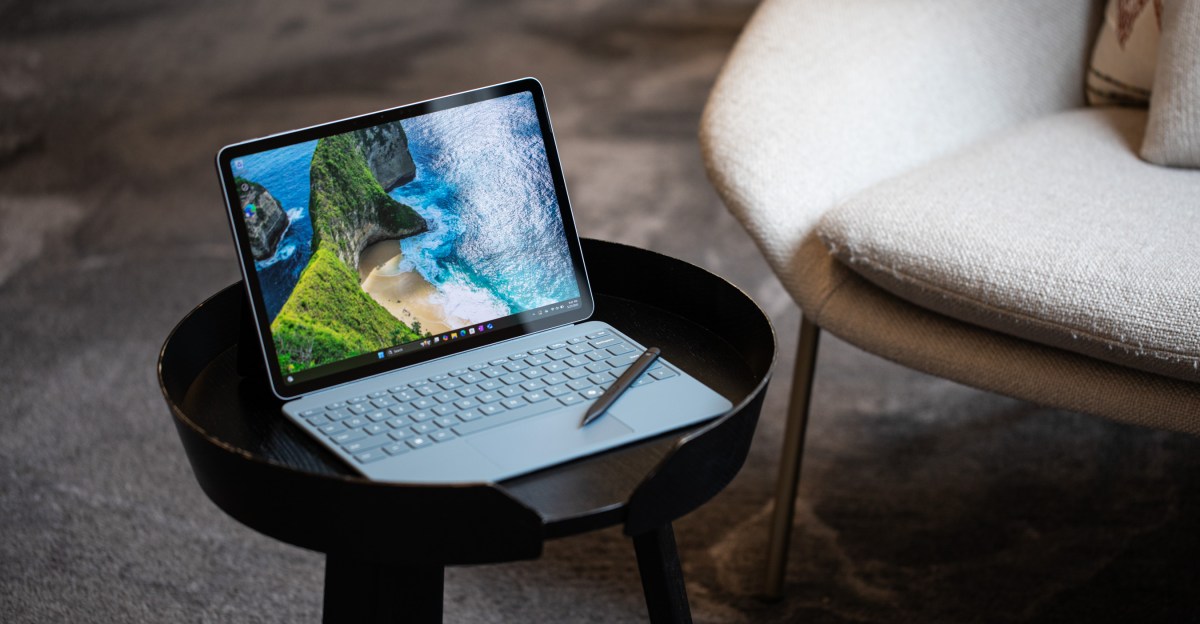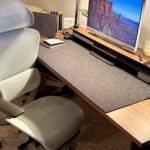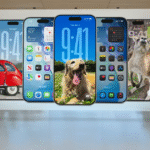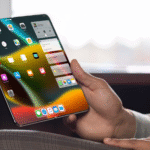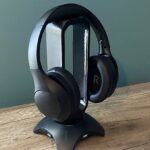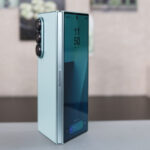I have always had a soft spot for the Surface Pro X. It was the thinner, lighter, and fanless Surface tablet that I had always wanted Microsoft to make, but when it came out nearly six years ago, Windows wasn’t ready to handle the Arm chip inside — and vice versa. Sluggish performance and app compatibility issues kept the Surface Pro X from living up to its beautiful design. It was a heartbreaker.
Microsoft is once again trying to perfect the Surface Pro design with a $799 12-inch version of its tablet and laptop hybrid that ditches the fan and uses Qualcomm’s latest Snapdragon X Plus chip. This time around, it’s warming my heart instead of breaking it, thanks to a redesign of the entire tablet and the performance and battery life to match.
The result of the overhaul is a tablet that combines some of the best design elements you’ll find on an iPad or Samsung’s tablets, with the versatility of Windows. While the competition has been trying to copy the Surface Pro for years, Microsoft has now borrowed from the best tablets to improve its own laptop and tablet hybrid even further.
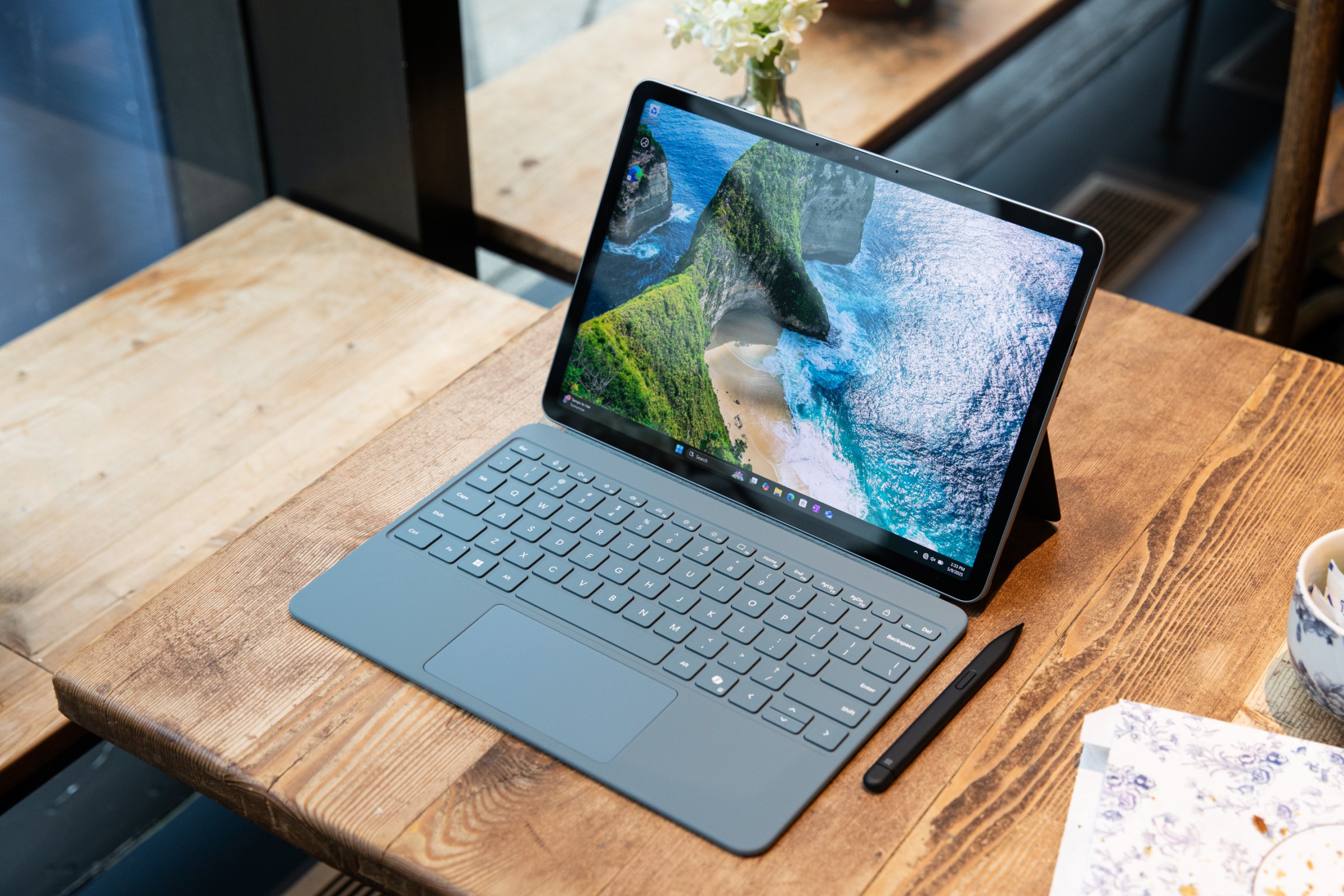
$800
The Good
- Beautiful fanless design
- Great battery life
- The keyboard is a lot sturdier
The Bad
- Windows still needs a better UX in tablet mode
- The thick display bezels
- No haptic touchpad
Last year’s Surface Pro 11 (now the Surface Pro 13-inch) had the same basic design Microsoft had been using since the Surface Pro 8 in 2021, with an airflow vent wrapped around the top half of the chassis that your fingers would tend to find if you were using it as a tablet. The most obvious design change to the 12-inch Surface Pro, other than its smaller display, is that it doesn’t have those vents. It’s sealed off and rounded in a way that an iPad is, so it feels a lot softer to hold.
I love this new design. The lack of a fan has allowed Microsoft to push ahead with this change, and it’s one that I really hope sticks for all future models because I never want to use a Surface Pro with a fan ever again.
While the kickstand is largely unchanged, this new rounded design also enables some big changes to how the stylus and keyboard work on the 12-inch Surface Pro. Microsoft has moved the stylus storage and charging to the top rear of this smaller Surface Pro, much like Samsung’s Galaxy Tab devices. It’s more convenient than having to dig into the keyboard and fiddle to get the Surface Pen out, and Microsoft has managed to use strong enough magnets that the stylus never once dropped inside my bag over the past few weeks.
However, that does mean that if you’re in tablet mode but not actively using the pen, it’s often in the way. The keyboard cover won’t sit flush with the back of the Surface if you fold it back while the pen is attached; there’s a gap at the top where it rests against the pen, and it feels a bit wobbly. And if you use the Surface Pro as a pure tablet, but don’t use the stylus, then you’ll probably end up resting your fingers on it or shaking the slightly loose button. It’s not a big deal, especially when you consider that the Surface Pro ships without a keyboard ($149) or stylus ($129), and you have to purchase them separately or in a $249 bundle. Most people probably won’t bother with the stylus, but if you do, that’s something to be aware of.
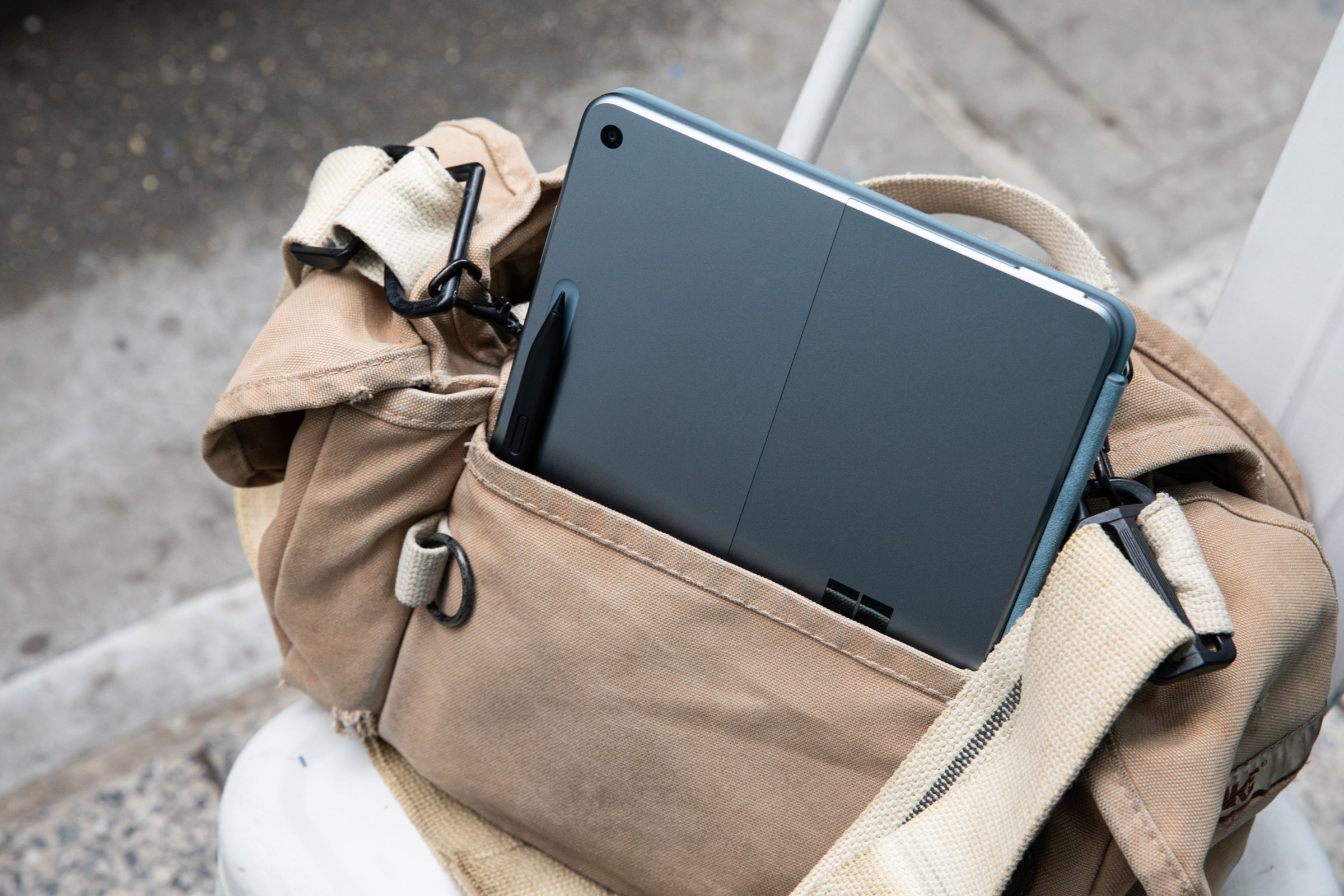
Repositioning the stylus has allowed Microsoft to make some significant changes to the keyboard on the 12-inch Surface Pro. While it still magnetically clicks into place on the bottom edge of the tablet, it now lays perfectly flat. The keyboards of previous models had a second magnetic attachment point at the bottom of the front bezel, optionally giving the keyboard a slight angle. Without it, the keyboard feels a lot sturdier.
Previous Surface Pro keyboards also had a lot of flex to them, which always put me off using the Surface Pro on work trips where I’d be writing thousands of words for stories. The new keyboard has no flex whatsoever. Even on my lap, it feels sturdier for typing, though the kickstand prevents you from having it far back on your legs as you would a regular laptop, and I quickly got used to the slightly smaller size. The other big change is that it’s no longer lined with alcantara fabric on the palm rests. The rear cover still has alcantara, but Microsoft is now using a plastic for the palm rests instead of the fabric that could easily get dirty. I think I still prefer the softer touch of the alcantara palm rests, though.
You can’t use the keyboard wirelessly like you could with the 13-inch Flex keyboard, and Microsoft has also ditched the haptic touchpad. I never used the wireless option, but the lack of haptics really makes the touchpad feel a lot more bland, and it’s something I’ve missed a lot over the past few weeks.

One thing I haven’t missed is the larger OLED display found on the 13-inch model. I really hate the grainy effect that the OLED has, especially around black text on a white background. On the 12-inch model, Microsoft is using a regular 3:2 PixelSense LCD display, and while it’s a slightly lower resolution and a 90Hz panel instead of 120Hz, I far prefer it for reading text. I do wish the bezels were a lot slimmer, but Microsoft has at least made them the same size all around the 12-inch display, so they feel a little less distracting than on the 13-inch model.
In keeping with Microsoft borrowing ideas from other tablets, the company has repositioned the rear camera on the 12-inch Surface Pro so it’s in the corner like on Samsung’s tablets or Apple’s iPads. I still wouldn’t be caught dead taking photos using a tablet, but it makes more sense like this, rather than centered on the long edge, so you can at least hold the Surface Pro vertically if you really want to take photos or videos.
The front-facing 1080p camera isn’t ultrawide this time around, so it doesn’t have the unflattering fish-eye effect and framing found on the 13-inch Surface Pro. I’ve used it for plenty of calls, and while I’m still not a fan of the way the eye contact feature changes the shape of my eyes, the other Windows Studio Effects are super useful for improving your lighting or blurring out the background automatically.
Inside the 12-inch, Microsoft is using Qualcomm’s eight-core Snapdragon X Plus chip. It’s an Arm-based processor, so that means apps will run emulated unless a developer has natively compiled their app for Arm64. That used to be a big issue with the Surface Pro X in 2019, but a lot has changed over the past 12 months, let alone six years.

Most of the apps I use on a daily basis are now native Arm64. The big exceptions for me include Discord and Premiere Pro. While Discord has been busy adding currencies for ads instead of releasing a native Arm version of its app, that might be about to change. I’ve been using an early Arm-native development build of Discord recently, and it totally solves all of the sluggish performance issues.
The same can’t be said for Premiere Pro, though. While Adobe has created an Arm64 version of Photoshop, you still have to install the Intel-based version of Premiere Pro. It’s not totally unusable, but I wouldn’t recommend any Arm-based machines for Premiere Pro usage until Adobe finally addresses this.
The Snapdragon X Plus chip inside the 12-inch Surface Pro has two fewer cores than the base LCD 13-inch model, and four cores less than the 12-core OLED variant. I’ve been using a 10-core Surface Laptop regularly over the past year, and this Surface Pro hasn’t felt slower at all.
As this is a Copilot Plus PC, Microsoft also uses the neural processing unit (NPU) built into Qualcomm’s chip to enable a bunch of AI-powered features in Windows. The controversial Recall feature is now available, which takes snapshots of mostly everything you do on the Surface Pro to create a scrollable timeline. I’ve found Recall to be creepy, clever, and compelling, but it’s not a big reason to buy a Copilot Plus PC. I’ve loved using the improved AI-powered Windows Search though, which lets me search for text inside files or photos, and find documents a lot more quickly.
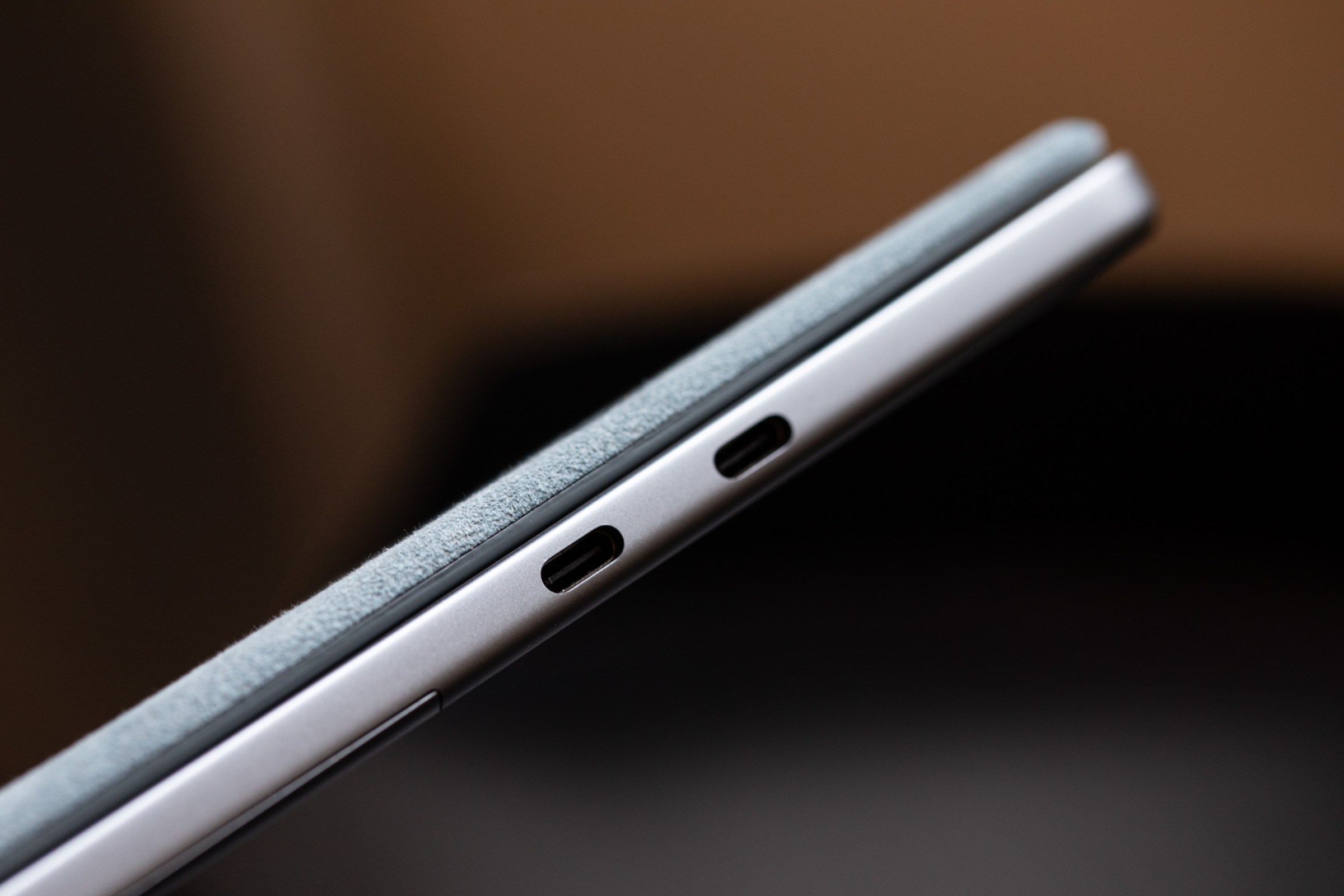
If you’re like me and most of your work is in the browser or involves apps that are native Arm64, then the Surface Pro 12-inch feels like the performance of a laptop squeezed into a tablet. I’ve found that I get around nine hours of battery life with mixed usage of the browser, apps like Photoshop and Slack, and maybe the odd Teams call here or there.
I’ve never really worried about charging the Surface Pro 12-inch, and on some days I even used it for an eight-hour working day and still had 30 percent battery remaining. I’d wake up the next day and it still had that 30 percent, or close to it, ready for the day ahead. Microsoft has also ditched its magnetic Surface Connect charging cable, but there are two USB-C ports that can be used to charge up the Surface Pro. I only use USB-C to charge my devices, so I don’t think I’ll miss the Surface Connect port other than the neat way it attaches on the 13-inch model.
While the Surface Pro is great at resuming instantly and not draining battery life in your bag or overnight, if you don’t use it for a couple of days over a weekend then you’ll have to wait 30 seconds or so for it to be ready to use on a Monday morning. This isn’t a huge issue, but the iPad never goes into a deep sleep mode like this, and on a couple of occasions I’ve resumed the Surface Pro on a Monday and the Windows Hello camera has failed to work. I kept getting a “something went wrong” message, but rebooting the device brought it back to life again.
I’ve used this Surface Pro on a train, on my sofa, on a desk, and in pubs and cafes over the past few weeks. I still find that I have to adjust my posture or body to use the Surface Pro in my lap because of the kickstand, but it almost feels worth this slight compromise for the versatility of using a small PC on the go.
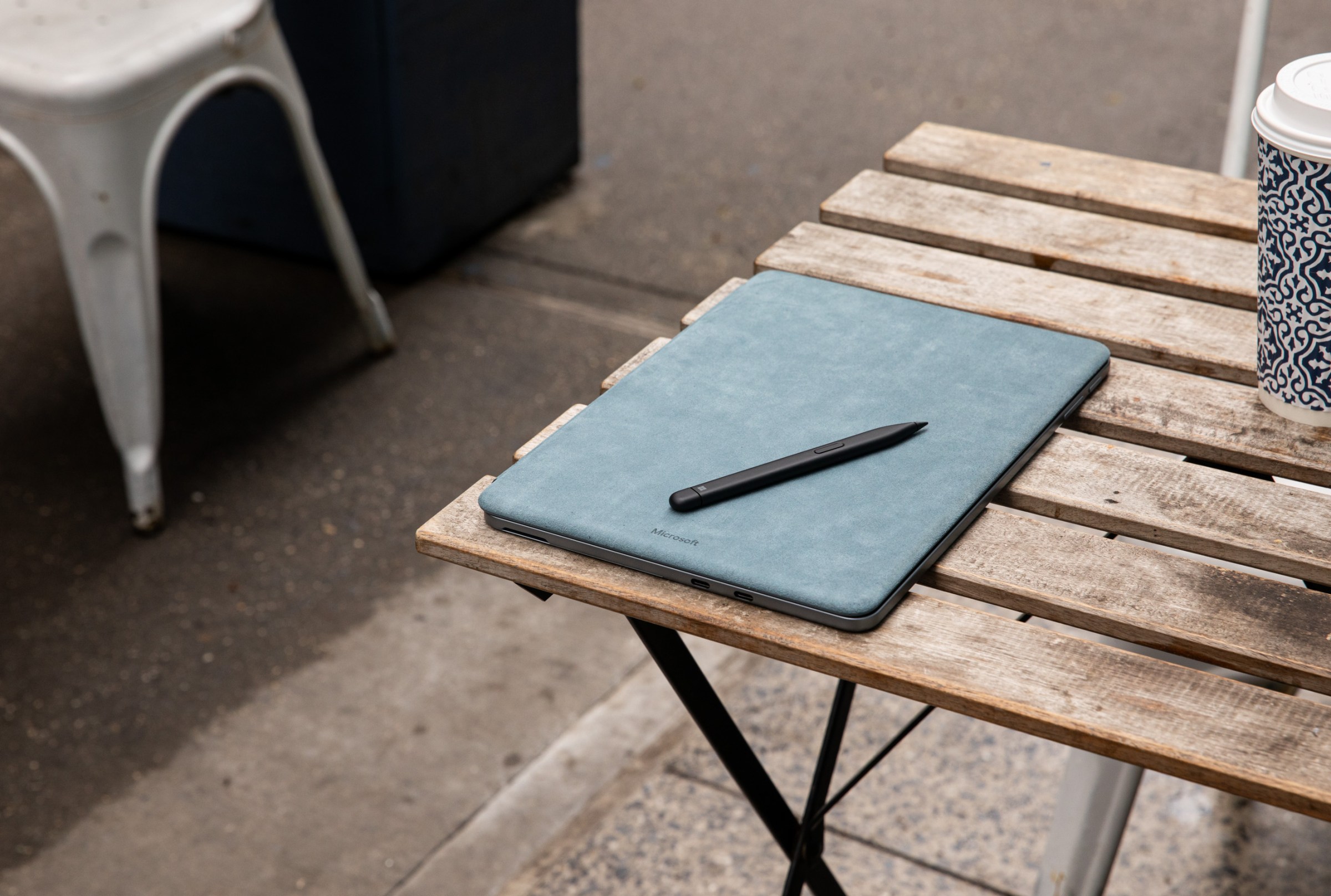
This Surface Pro redesign also presents some of the best bits of rival tablets into a piece of hardware that feels a lot more tablet-like than Microsoft has ever created. I’ve been using this Surface Pro in tablet mode more often as a result, simply because of the smaller size and the ease of switching between laptop and tablet modes. The operating system and apps still feel like more of a laptop, though. Microsoft also sells the Surface Pro without a keyboard, as if it’s a pure tablet, but as always, you really need to purchase that $150 keyboard to unlock the best experience.
That pushes the pricing up to $950, which is more than you’d pay for a 13-inch Surface Laptop, and close to the $999 launch price of the Surface Laptop 7. While the Surface pricing situation seems more complicated than ever, I love small computers, and the 12-inch Surface Pro has this allure to it that makes me want to keep picking it up for the day.
I’d still like to see Microsoft improve the tablet experience in Windows 11 with a mode that’s more like what existed in Windows 8. But even without those improvements, the 12-inch Surface Pro is as close as Microsoft has ever gotten to fulfilling my dream of a lightweight PC you can throw under your arm and carry around all day without worrying about battery life. It’s still not perfect, but it’s not the heartbreaker the Surface Pro X once was.
2025 Microsoft Surface Pro 12-inch specs (as reviewed)
Display: 12-inch (2196 x 1464) 90Hz touschscreen
CPU: Qualcomm Snapdragon X Plus (8-core)
Webcam: 1080p front-facing, 10-megapixel rear-facing
Connectivity: Wi-Fi 7, Bluetooth 5.4
Dimensions: 10.8 x 7.47 x 0.30
Photography by Amelia Holowaty Krales / The Verge
Read the full article here





